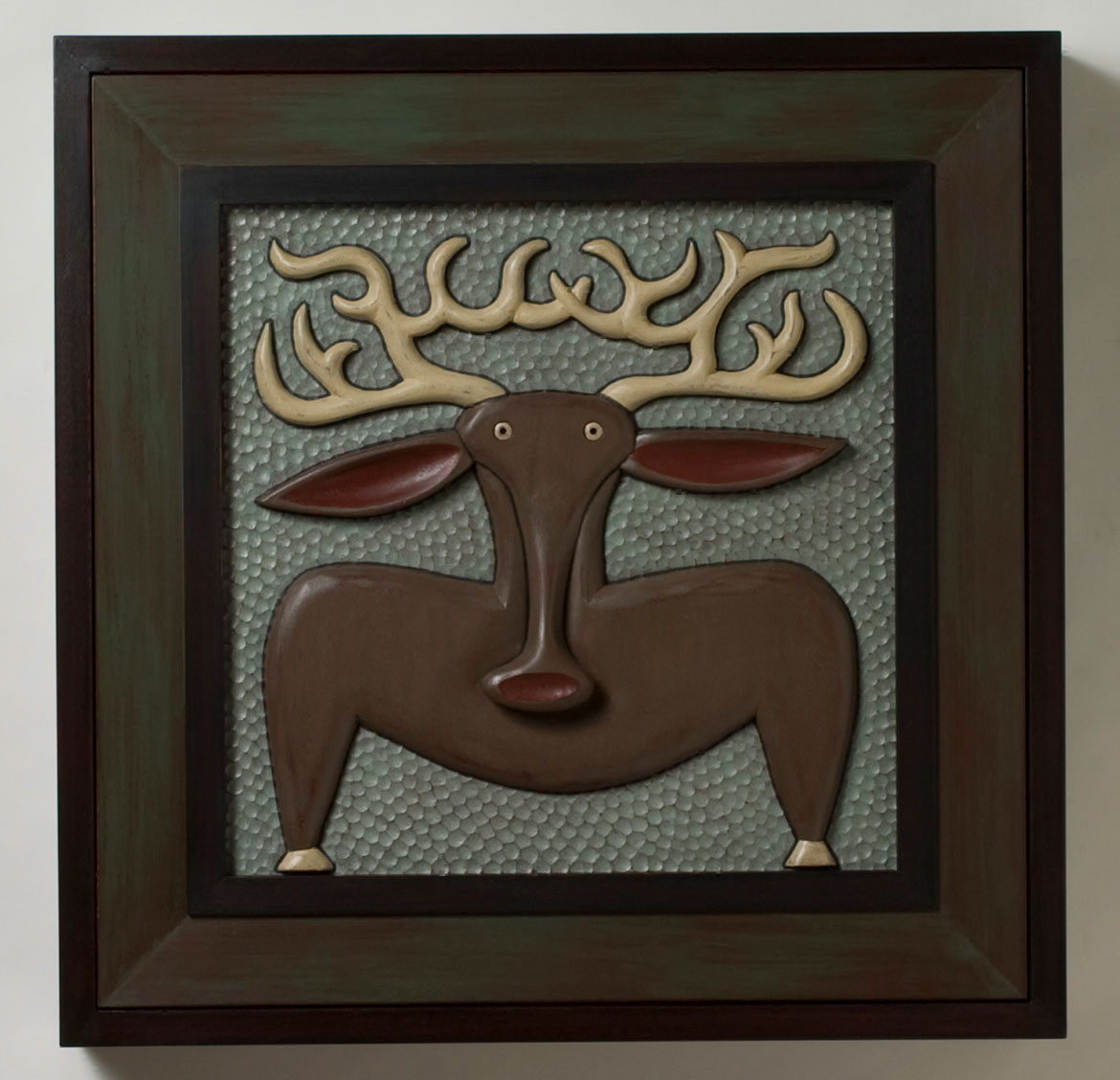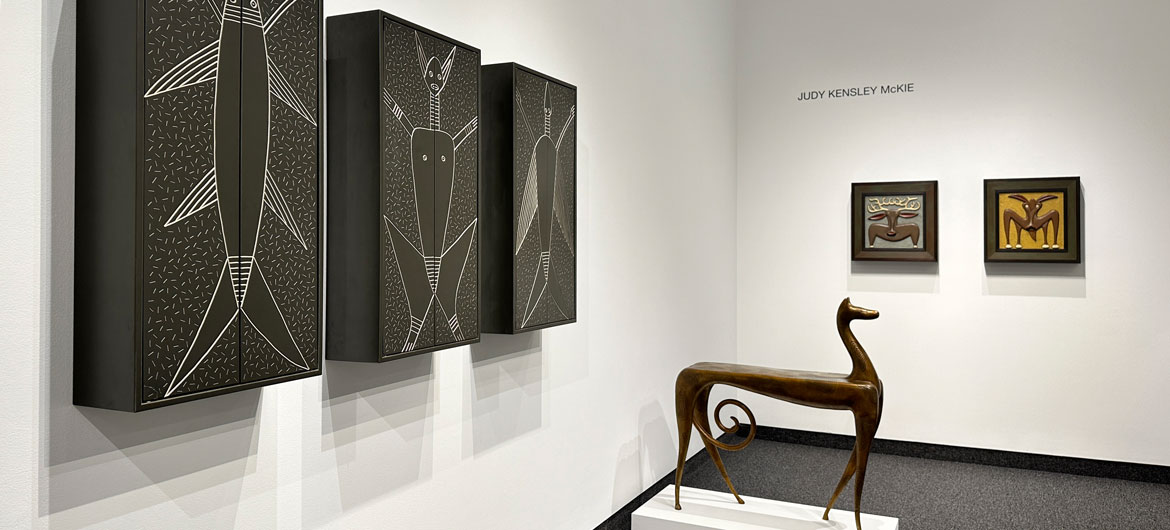A dog becomes a table, an owl becomes a bronze vase, and a cast bronze tree holds up a glass tabletop in Judy Kensley McKie’s exhibition “Carving the Surface” at Boston’s Gallery NAGA from May 3 to June 1, 2004.
For decades, the Cambridge artist has stood out in the studio furniture movement with her witty animal-inspired designs, creating, as she has said, “inanimate objects that are animated.”
In the early 1980s, Muppeteer Jim Henson commissioned McKie to craft a dining room table with vine legs and chairs with animal forms. Hollywood comedian Robin Williams was a collector. The Toledo Museum of Art owns a white marble bench she had carved in the shape of a polar bear—“you find marble that has a little bit of sparkle in it, it looks like it’s covered with snow,” McKie told Jonathan Binzen for an interview published by Gallery NAGA in 2006.
The NAGA exhibition includes a basswood blanket chest is incised with depictions of frolicking birds, as well as tables, cabinets, headboards, vases, mirror frames and other works from 1984 to 2018.
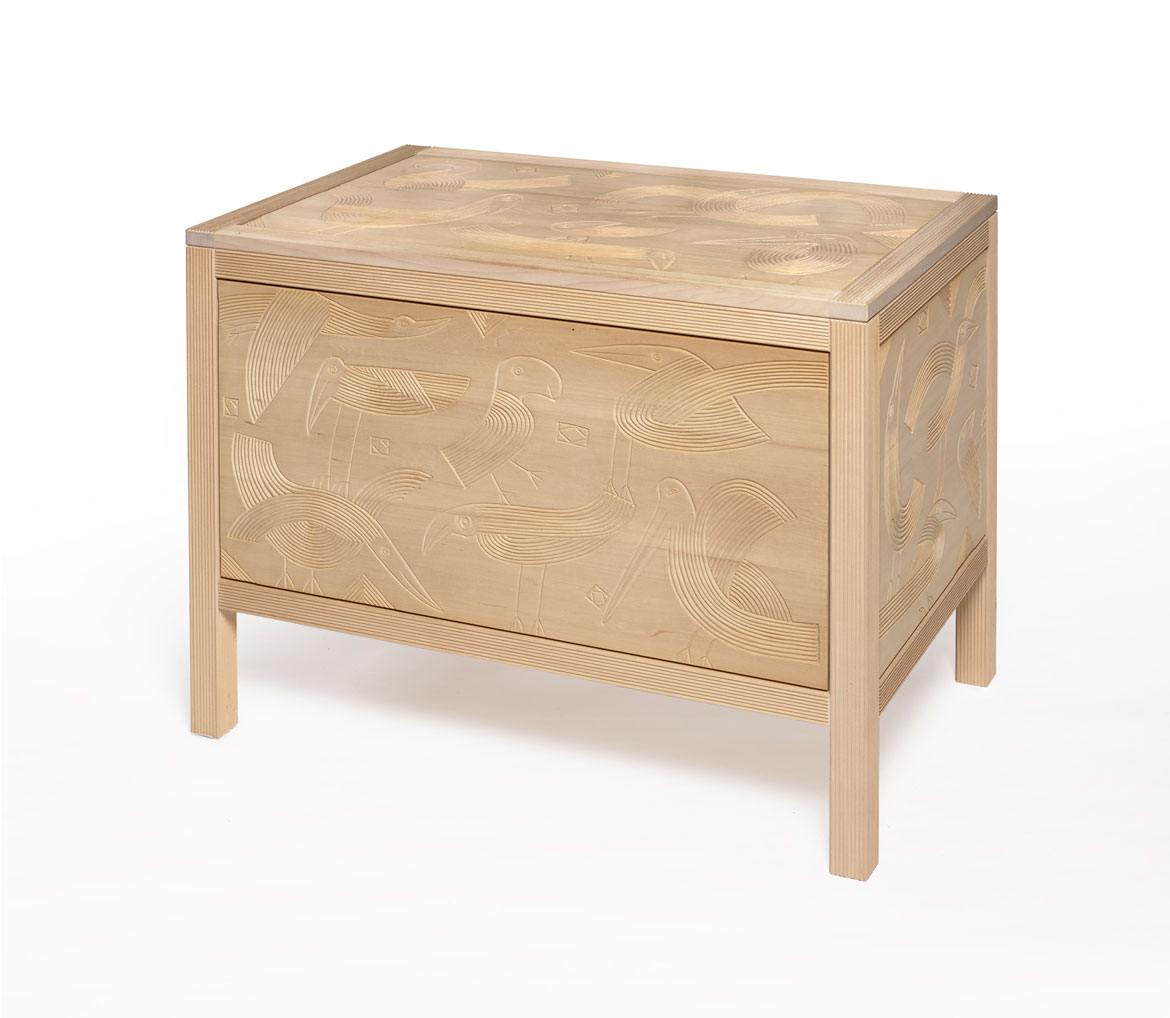
McKie began making furniture in the early 1970s—first for her Cambridge apartment. “We were so poor that we couldn’t afford furniture,” McKie said in a 2004 interview for the Smithsonian’s Archives of American Art.
“I made a coffee table, a couch, a kitchen table—things that we needed,” McKie told Binzen. “I discovered I wasn’t comfortable with making things that you just put on the wall and looked at. Whereas if it was something you used, I felt like it was worth the time it took to make it. And I realized that that was what I loved doing.”
McKie was born in 1944 and grew up in Lexington. Her parents had gone to art school, then made a living designing for a greeting card company. Her father later was a salesman for a printing company. She learned the basics of woodworking from helping her father with home projects when she was a girl.
She studied painting at Rhode Island School of Design in Providence, where she met the painter Todd McKie when they were freshmen. She graduated in 1966, and they married and moved to the Boston area the following year. (Todd died at their Cambridge home on Jan. 30, 2022, at age 77.)
She worked in a sandal shop and taught art at an Episcopal school for girls in Arlington. She and her husband made banners—including a commission depicting signs of the zodiac for the Woodstock rock festival in 1969. The banners became such a successful business that they quit—because it was taking too much time away from making their art.
Friends she bumped into at the lumber yard while making furniture for her home asked her to make furniture for them, and one thing led to another. She joined the New Hamburger Cabinetworks Cooperative Workshop in Boston’s Roxbury neighborhood—and later in Cambridge.
McKie had been influenced by Shaker and Pennsylvania Dutch furniture. “After about five years or so of making very straightforward furniture, I started feeling like I wanted to bring it to life,” McKie told Binzen. “I had gotten a little bored with the process. And I decided that if I was going to continue to do it, I had to reintroduce the aesthetic element—to try and find a way to make the work exciting and fun.”
She drew urgently, figuring out ways armrests could become animals or tables could become creatures. She had been constructing using woodshop machines, and now taught herself how to hand carve. Inspiration came from African, pre-Colombian and indigenous American creations.
The studio furniture movement was often very interested in materials, but for McKie the materials were primarily a means to her end. “The things that really appealed to me were animal forms,” McKie said in the Smithsonian interview.
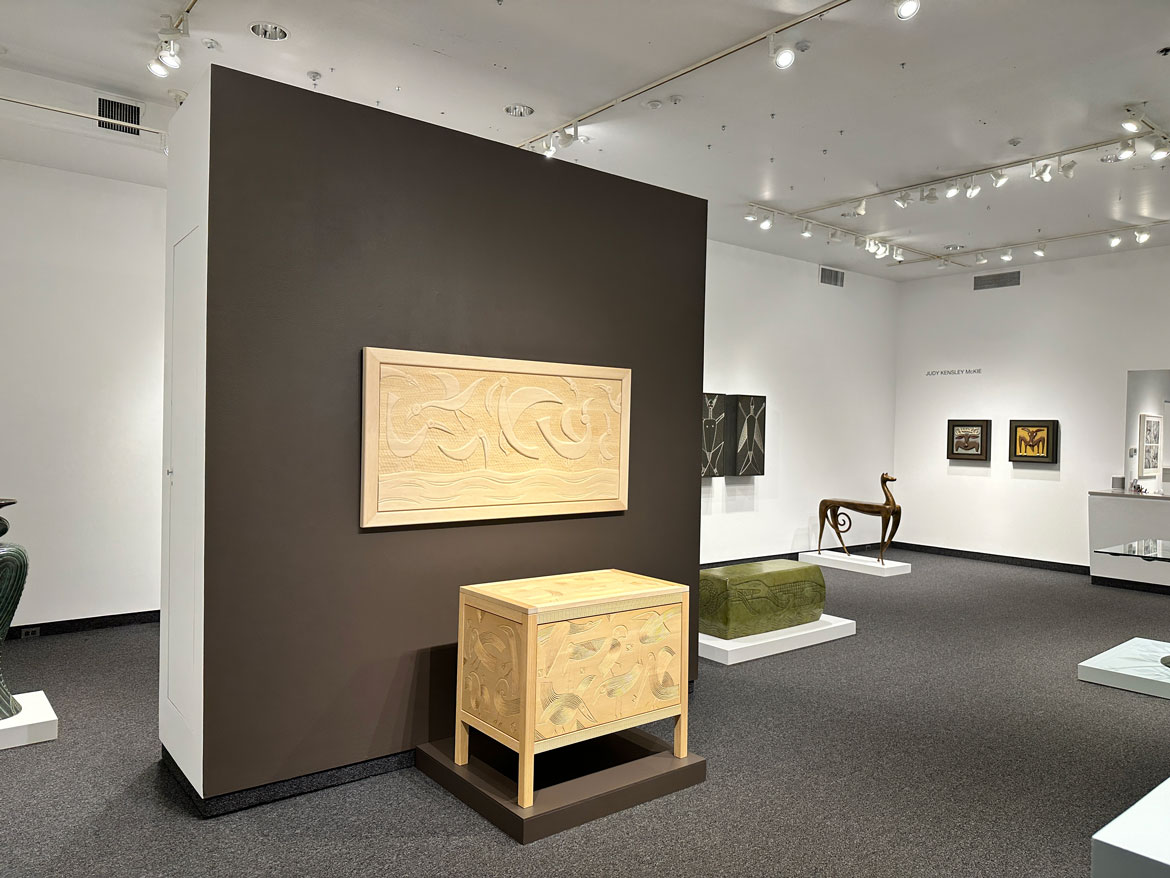
A glass-topped dog-table and some other of her early animal-furniture pieces were included in a touring exhibition called “New Handmade Furniture” organized by the American Craft Museum in New York in 1979. The show connected her with a market for her work. “Suddenly I was able to make the work I wanted to, full-time. And actually be able to sell it and start to make a living from selling that work instead of doing other work,” McKie said in the Smithsonian interview.
McKie began working in bronze as well in the mid-1980s. She had made a wooden table sculpted like dogs chasing each other’s tails, and painted it black to resemble iron. A furniture-maker friend who acquired it got the idea to see if a foundry he worked with could cast it in bronze, which led McKie into a whole new area of creation.
“These pieces are influenced by the style of Art Deco, but have an offbeat charm all their own; they somehow manage to achieve a sleek sophistication while also recalling a hand-drawn children’s book,” San Francisco’s Museum of Craft and Design wrote of her 2018 exhibition there “Judy Kensey McKie: Cast of Characters.”
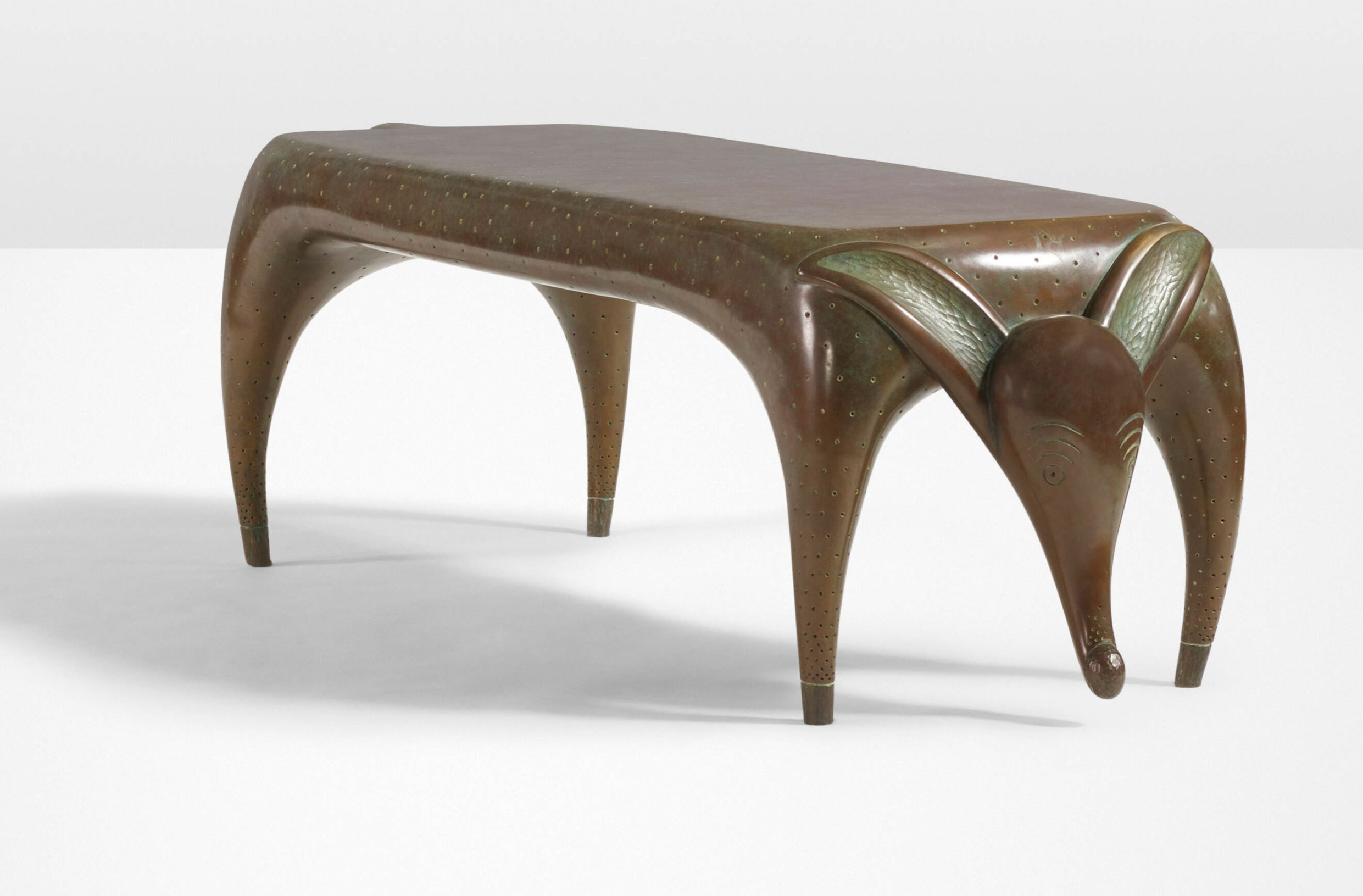
In the plaza outside Cambridge’s Valente Branch Library, stand tree of McKie’s bronze “Alley Cats” benches from 2005. For Boston’s Garden of Peace, a memorial to murder victims that was dedicated in 2004, she created an 18-foot-tall sculpture of three bronze ibises taking flight—in honor of their only child, Jesse, who was murdered in 1990 at age 21.
“It’s meant to be a symbol of hope and a visual statement of the possibility of transcending the violence,” McKie told the Globe in 2003.
In her art, over the years, alligators and cats became bronze benches, a lizard became a door knocker, a pair of monkeys with curling tails became a chair, two panthers held a glass table top in the mouths and on their backs, kissing leopards became the back of a spare mahogany couch.
”My furniture used to be influenced by straightforward Shaker forms,” McKie told The New York Times in 1987, “but I wanted to animate what I was making—to make it come alive. Using animals was one way of doing that.’’
If this is the kind of coverage of arts, cultures and activisms you appreciate, please support Wonderland by contributing to Wonderland on Patreon. And sign up for our free, occasional newsletter so that you don’t miss any of our reporting. (All content ©Greg Cook 2024 or the respective creators.)
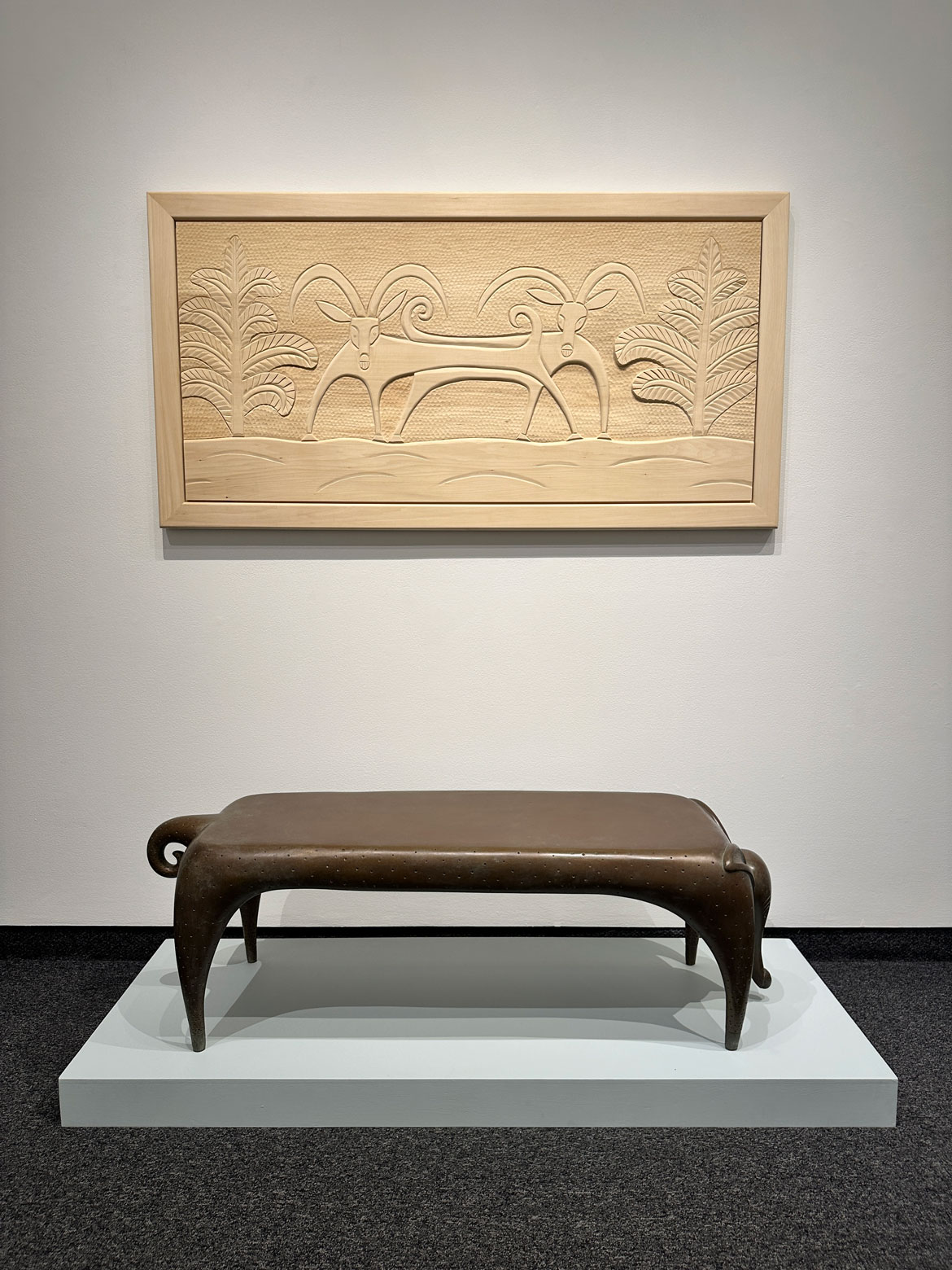
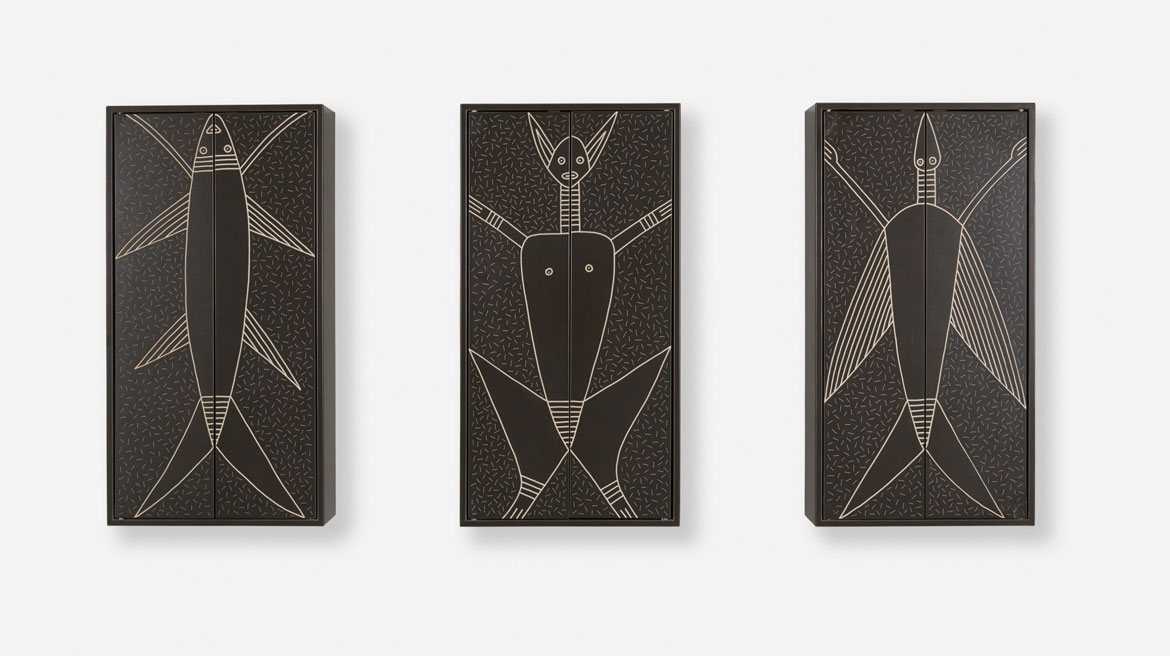
carved ColorCore. (Gallery NAGA)
